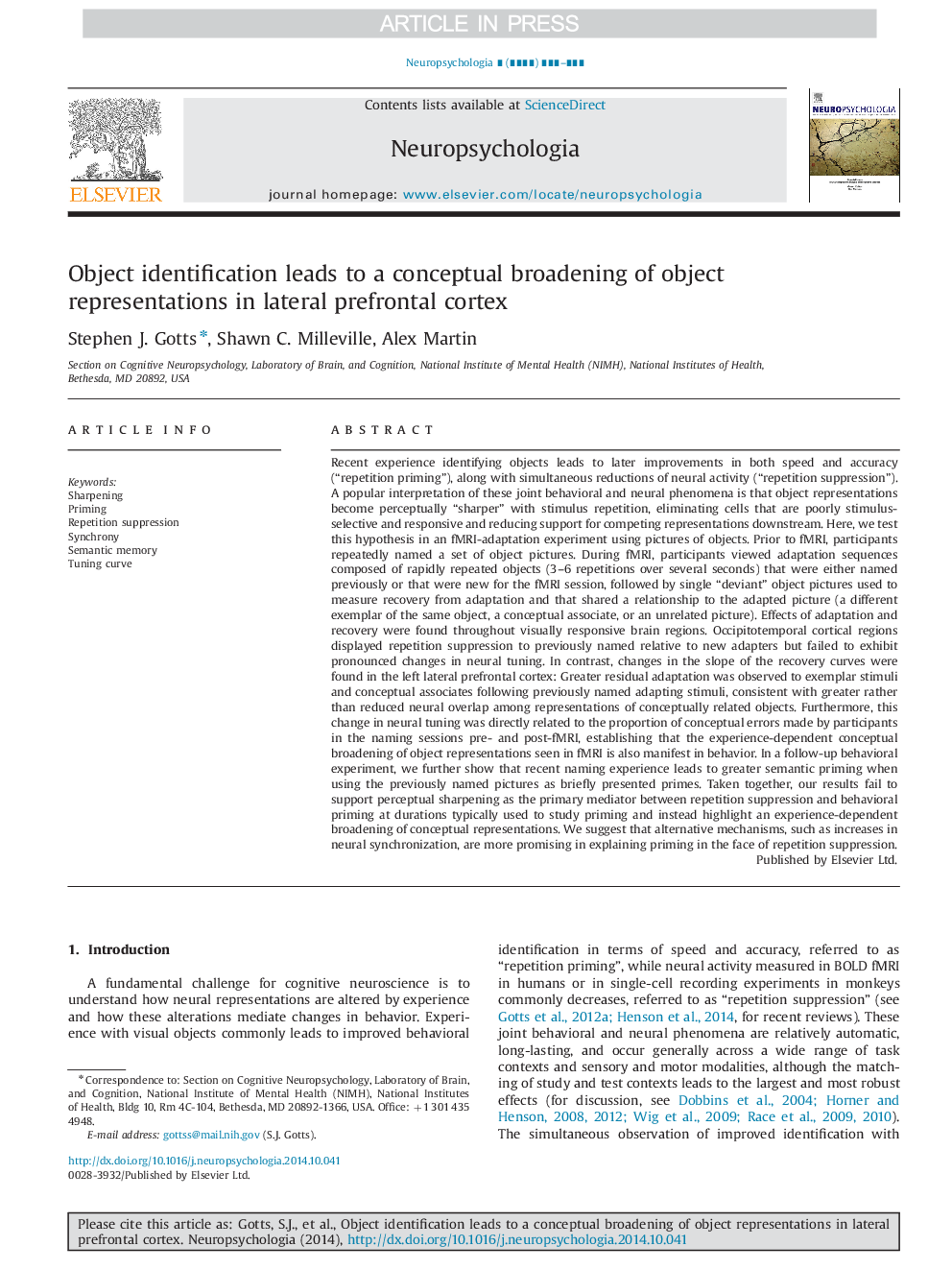| کد مقاله | کد نشریه | سال انتشار | مقاله انگلیسی | نسخه تمام متن |
|---|---|---|---|---|
| 7319712 | 1475577 | 2015 | 17 صفحه PDF | دانلود رایگان |
عنوان انگلیسی مقاله ISI
Object identification leads to a conceptual broadening of object representations in lateral prefrontal cortex
ترجمه فارسی عنوان
شناسایی شیء منجر به گسترش مفهومی نمایه های شی در قشر جانبی پیشانی می شود
دانلود مقاله + سفارش ترجمه
دانلود مقاله ISI انگلیسی
رایگان برای ایرانیان
کلمات کلیدی
تیز کردن، آغازگر سرکوب تکرار، هماهنگی، حافظه معنایی، منحنی تنظیم،
موضوعات مرتبط
علوم زیستی و بیوفناوری
علم عصب شناسی
علوم اعصاب رفتاری
چکیده انگلیسی
Recent experience identifying objects leads to later improvements in both speed and accuracy (“repetition priming”), along with simultaneous reductions of neural activity (“repetition suppression”). A popular interpretation of these joint behavioral and neural phenomena is that object representations become perceptually “sharper” with stimulus repetition, eliminating cells that are poorly stimulus-selective and responsive and reducing support for competing representations downstream. Here, we test this hypothesis in an fMRI-adaptation experiment using pictures of objects. Prior to fMRI, participants repeatedly named a set of object pictures. During fMRI, participants viewed adaptation sequences composed of rapidly repeated objects (3-6 repetitions over several seconds) that were either named previously or that were new for the fMRI session, followed by single “deviant” object pictures used to measure recovery from adaptation and that shared a relationship to the adapted picture (a different exemplar of the same object, a conceptual associate, or an unrelated picture). Effects of adaptation and recovery were found throughout visually responsive brain regions. Occipitotemporal cortical regions displayed repetition suppression to previously named relative to new adapters but failed to exhibit pronounced changes in neural tuning. In contrast, changes in the slope of the recovery curves were found in the left lateral prefrontal cortex: Greater residual adaptation was observed to exemplar stimuli and conceptual associates following previously named adapting stimuli, consistent with greater rather than reduced neural overlap among representations of conceptually related objects. Furthermore, this change in neural tuning was directly related to the proportion of conceptual errors made by participants in the naming sessions pre- and post-fMRI, establishing that the experience-dependent conceptual broadening of object representations seen in fMRI is also manifest in behavior. In a follow-up behavioral experiment, we further show that recent naming experience leads to greater semantic priming when using the previously named pictures as briefly presented primes. Taken together, our results fail to support perceptual sharpening as the primary mediator between repetition suppression and behavioral priming at durations typically used to study priming and instead highlight an experience-dependent broadening of conceptual representations. We suggest that alternative mechanisms, such as increases in neural synchronization, are more promising in explaining priming in the face of repetition suppression.
ناشر
Database: Elsevier - ScienceDirect (ساینس دایرکت)
Journal: Neuropsychologia - Volume 76, September 2015, Pages 62-78
Journal: Neuropsychologia - Volume 76, September 2015, Pages 62-78
نویسندگان
Stephen J. Gotts, Shawn C. Milleville, Alex Martin,
